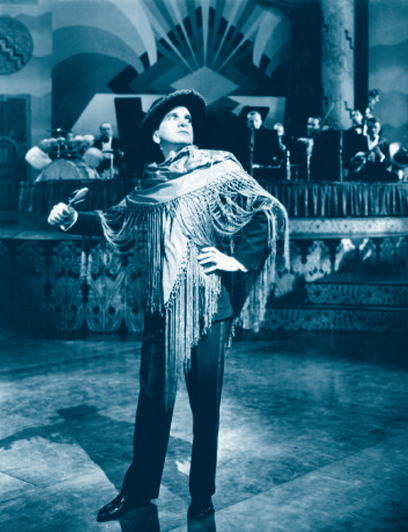Augmenting Images with Sound
Printed Page 204
Hollywood’s Golden Age also saw the introduction of sound in 1927, which further established a distinctive narrative style and set new commercial standards in the industry. The availability of movies with sound pushed annual movie attendance in the United States from sixty million a week in 1927 to ninety million a week just two years later. By 1931, nearly 85 percent of America’s twenty thousand theaters accommodated talkies (sound pictures). And by 1935, the rest of the world had adopted talking films as the commercial standard.

Earlier attempts at creating talkies had failed; however, technical breakthroughs in the 1910s at AT&T’s research arm, Bell Labs, produced prototypes of loudspeakers and sound amplifiers. Experiments with sound continued during the 1920s, particularly at Warner Brothers. In 1927, the studio produced The Jazz Singer, a feature-length silent film interspersed with musical numbers and brief dialogue. Starring Al Jolson, a charismatic and popular vaudeville singer who wore blackface makeup as part of his act, the movie further demonstrated racism’s presence in the film industry. Warner Brothers’ 1928 release The Singing Fool, which also starred Jolson, became the real breakthrough for talkies. Costing $200,000 to make, the film raked in a whopping $5 million and “proved to all doubters that talkies were here to stay.”2
Warner Brothers was not the only studio exploring sound technology. Five months before The Jazz Singer opened, Fox premiered sound-film newsreels (weekly ten-minute compilations of news events from around the world). Fox’s newsreel company, Movietone, captured the first film footage with sound of the takeoff and return of Charles Lindbergh, who piloted the first solo, nonstop flight across the Atlantic Ocean in May 1927. The Movietone sound system eventually became the industry standard.